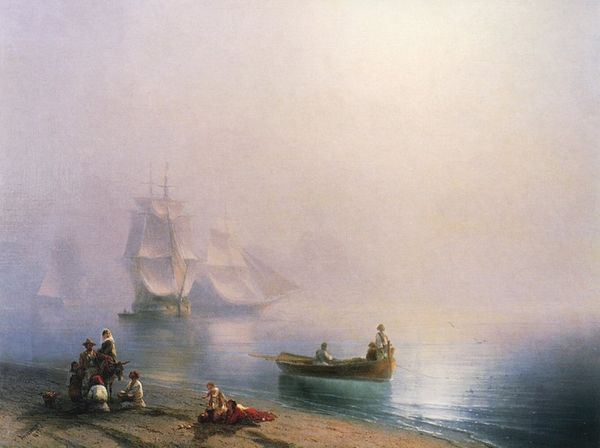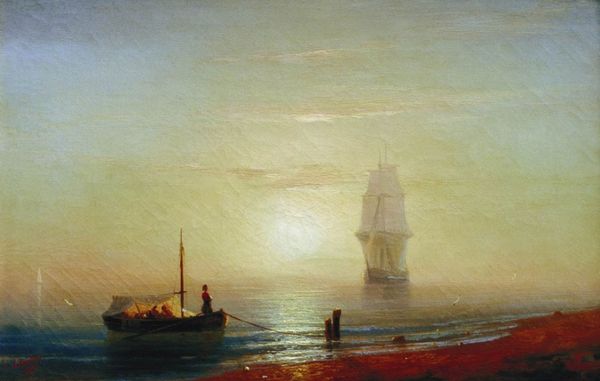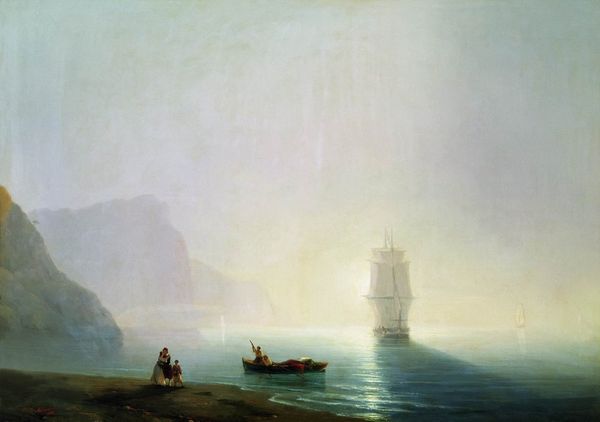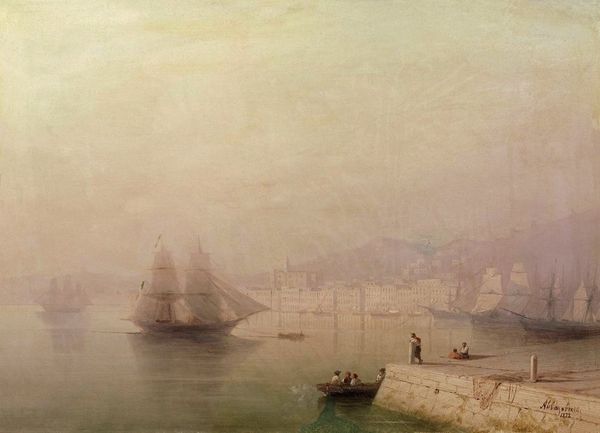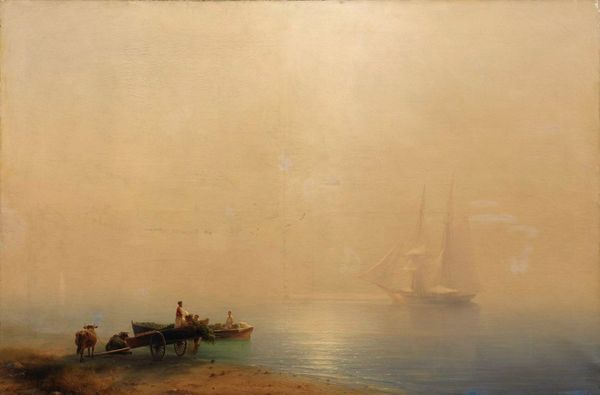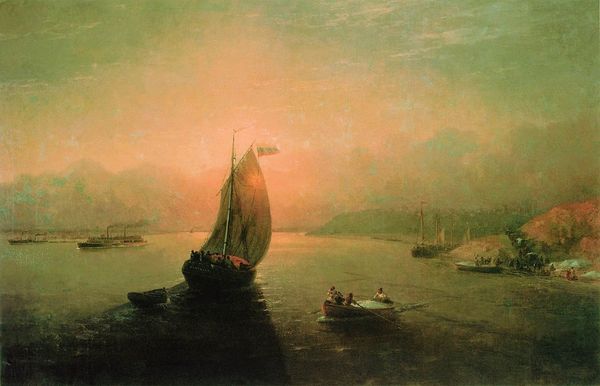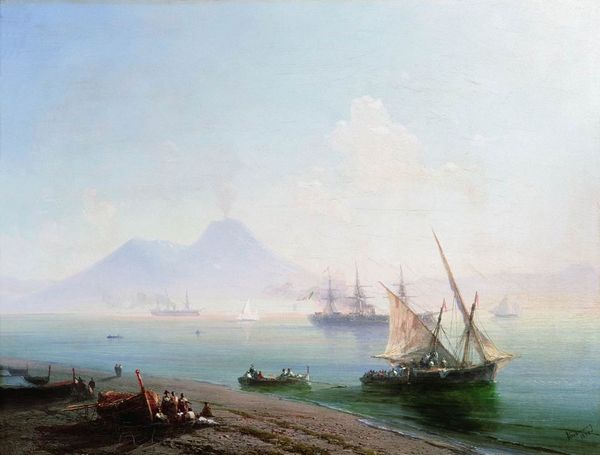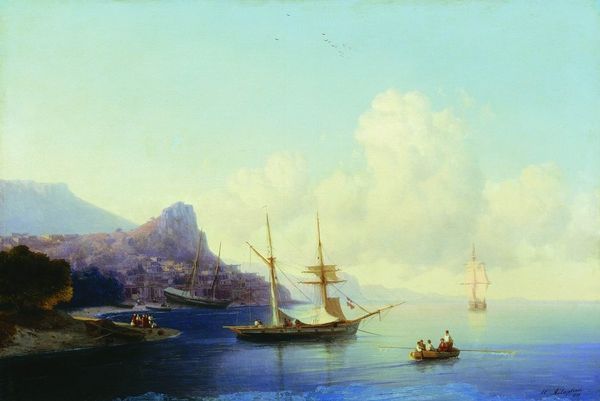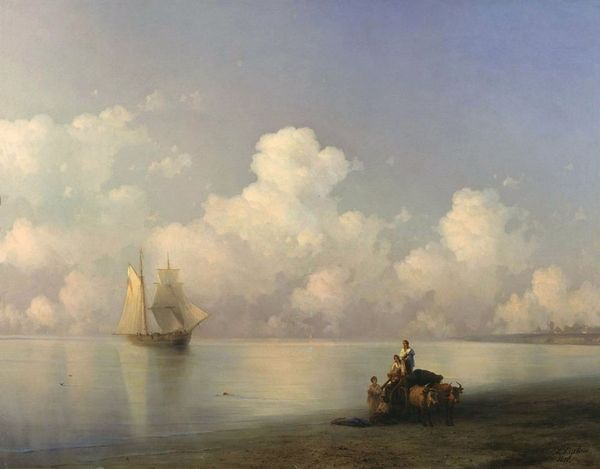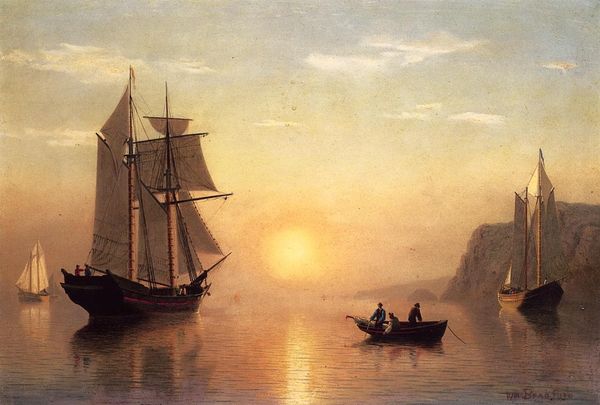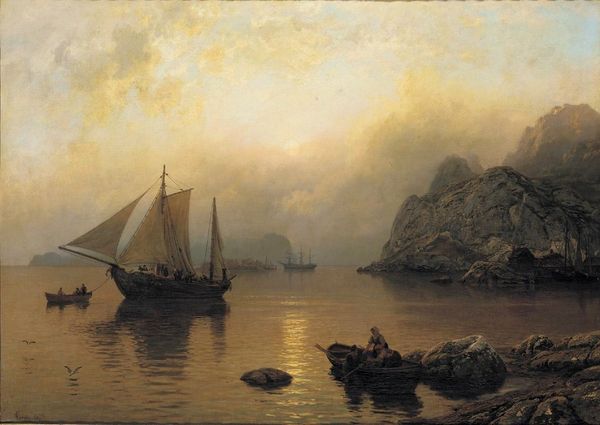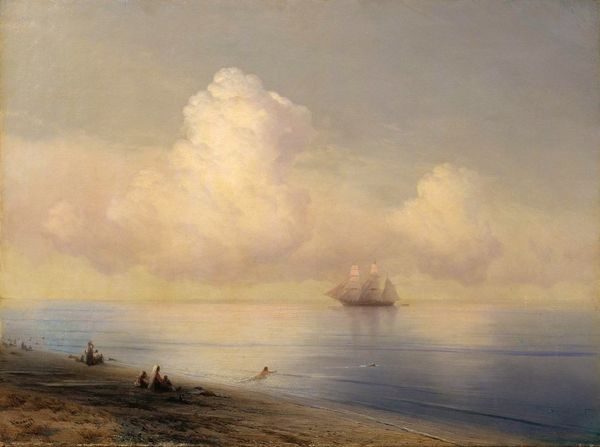
Dimensions: 148 x 214 cm
Copyright: Public domain
Curator: Aivazovsky’s "The Bay of Naples on a Misty Morning," painted in 1874, offers us a glimpse into 19th-century Neapolitan life. Editor: The way the mist blurs the details of the ships and the distant shoreline is quite striking; it lends the painting an ethereal, almost dreamlike quality. The diffused light definitely dictates the muted palette here. Curator: Aivazovsky, known for his seascapes, was often drawn to portraying maritime settings—a motif reflective of the era's obsession with romanticism and the sublime power of nature, don't you think? He witnessed firsthand how the industrial revolution impacted ports like Naples and Constantinople. Editor: The hazy atmosphere undoubtedly obscures a purely documentary view. Observe the composition: the figures on the quay provide a grounded foreground, juxtaposed against the towering, ghostlike vessels fading into the background. It’s about a feeling, not a record. Curator: Precisely! These dockworkers embody the human element—laborers at the forefront of global exchange, often facing precarious circumstances within shifting economic and political dynamics. Their work sustains these ships which stand in as symbols of imperialism. Editor: While I agree there's that historical dimension, I can’t help but admire how the artist used color and light to create depth. See how the darker tones at the bottom anchor the composition, allowing the eye to travel towards the luminosity above. Curator: And isn’t the luminescence suggestive? Light itself acts as a structuring force. In that era, visibility often coincided with issues of political and social access. Editor: True, and the overall effect is compelling. There's a delicate balance between what is revealed and what is hidden—both literally in the depiction and perhaps symbolically in the social commentary. Curator: So we might argue Aivazovsky is using visual ambiguity to speak about political opacity. It definitely gives me a different perspective on the painting. Editor: Absolutely, considering it through this social lens enriches my understanding. Thanks!
Comments
No comments
Be the first to comment and join the conversation on the ultimate creative platform.
